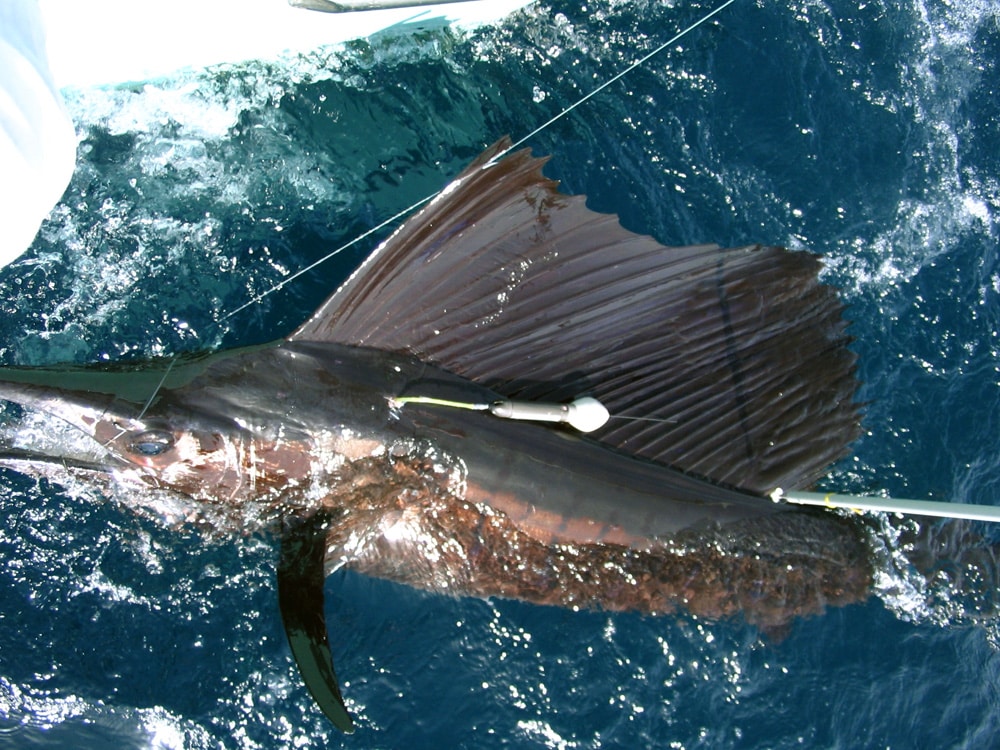
Sailfish Tagging Main
NOAA Fisheries scientists recognize and appreciate the efforts of South Florida captains Jimbo and Rick Thomas, who surpassed more than 1,000 tagged sailfish on their charterboat, the Thomas Flyer. The brothers efforts were recorded through NOAA’s Cooperative Tagging Program. Before Jim and Rick, this feat had never been reached by anglers targeting Atlantic billfish species.
Over the past decade, the Miami duo has helped scientists better understand the survival and mortality rates, spatial distributions and overall health of the Atlantic sailfish. Upon capture, tags are placed on the fish. When tagged fish are recaptured later data is collected by researchers.
In addition to sailfish tagging the Thomas brothers are also the top dolphinfish tagging team for the Dolphinfish Research Program based out of South Carolina. The team has also assisted in several pop-up satellite tagging projects.
The Thomas Flyer operates out of downtown Miami’s Bayside Marina. Jimbo and Rick have been fishing the waters of South Florida and The Bahamas for more than four decades with a majority of their tagging efforts starting in 2003. On average the team tags more than 120 sailfish a year.
The Cooperative Tagging Program is operated and maintained by NOAA Fisheries. This program relies on anglers to help deploy the FREE tags provided by NOAA Fisheries. The tags are used for sailfish, swordfish and any tuna species in the Atlantic Ocean. To request a free tagging kit or report a tag recapture please contact the Cooperative Tagging Center at 800-437-3936 or send an email to tagging@noaa.gov.

Captains Jimbo and Rick Thomas started tagging sailfish in 2003. After averaging 120 sailfish tags a year, they’ve hit the 1,000 mark.









